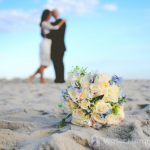Watermarking images: is worth it in photography?
Watermarking images can sometimes be a controversial topic. Some photographers think that it’s necessary to protect their work, while others argue that watermarks are distracting and take away from the aesthetic quality of the photo.
Why do you think this is?
What are some reasons why people might choose not to use them?

In this article, I’ll outline both sides of the argument and let you decide for yourself whether or not watermarking images is worth it in your own photography.
The first thing to consider when deciding whether or not you should watermark your photos is how important copyright law is to you as an artist.
If copyright infringement has been happening on a regular basis with no repercussions for the offender, then it may make sense for you to add a watermark on your photos. Today’s blog post can help you decide.
What is a Watermark and Why Does Watermarking Images Matter?
A watermark is usually a logo that you put on your photos to show who owns them. They are most often used by photographers and artists, but they can be useful for other purposes as well.
For example, if you want people to know who created the content of your website and blog posts, then adding watermarking images would probably help increase conversions.
The term “watermark” comes from the old practice of pressing paper with a design into the damp fabric to create an impression on it.
Over time, “to watermark” has come to mean any kind of visual design that can be seen through or over another surface (like images in your blog posts).

Watermarks are most often used by photographers and artists because they show who created something – for example, if someone alters your photo without permission then using a watermark will alert people that it’s not original work.
Why Should You Watermark Your Photos?
There are a lot of reasons why you should watermark your photos, but we’re going to cover the most important ones. First and foremost, it’s an excellent way to protect your copyright! You own the rights to every photo that you take.
If someone takes one of your photos without permission and posts them on their website for sale or any other type of use, you have no control over what they do with it.
By watermarking images, though, you can prove that they were created by you in case anyone tries to use them without permission. This is also a great way to build up brand recognition if you blog often or post on social media sites like Instagram or Pinterest!
Second, watermarking images is a great way to build up a portfolio. It’s hard for people to remember who they’ve seen before if you’re not constantly in their faces with the same face and name that they associate with all of your work.
If someone sees one of your photographs on Instagram or Pinterest without any indication that it was created by you, then how are they going to know about other projects?
Just adding something like “photography © Sarah Moore” can make such a big difference when people go looking at more than just the last thing from you!

Finally, watermarking images offer peace of mind. As a photographer, you can rest assured knowing that your works are protected and you probably won’t see your photos all over the internet without proper credits to you.
Why Shouldn’t You Watermark Photos?
Watermarking images is a technique that has been used for years to prevent copyright infringement. It’s also a way for photographers to advertise their work and make money from it.
The downside of watermarking images is that it can ruin the aesthetic appeal of an image, detract from other branding elements in your design, or be difficult to read when printed in small sizes.
Many viewers associate watermarks not only with low quality but also bad taste when they see it on professional work so adding one can make your photos less attractive than if you didn’t add one!
Moreover, If you watermark images from other photographers, you run the risk of inadvertently violating copyright law by using their work without permission or payment.
This can result in legal action against both parties involved as well as any business that profits off the use of an unauthorized image.
When Should You Use a Watermark?
Watermarks have been in use since the invention of photography and they continue to be important today because they allow you to protect your creative work from theft and misuse on social media sites like Facebook, Pinterest, and Instagram.
What about when should I use a watermark? Should I add it right away at the beginning or end, or when I post something? There are some good reasons why you may choose one time period over another:
Reason to add a watermark at the beginning: if you’re posting your work on Facebook or something similar, it’s possible for someone else to steal it and post their own photo with credit before you can get in there first.
This way, when they land on your original image, they’ll be reminded that this is yours.
Reason to add a watermark at the end: If people are viewing your images directly from Instagram or Snapchat (perhaps through an app) then using a watermark may not make as much sense because those platforms have built-in features like “share” so viewers know who created them right away.
How Do You Design a Watermark?

Watermarking images is an important step in the process of copyrighting them. A watermark is typically text that goes across your image, with space to add your contact information and branding. The first thing you need to do when creating a watermark is to decide what type of font will be used as well as its style and size.
You should also consider whether or not you want it on both sides of the image or just one side if there’s room in the design. The next step is to get the design ready for a transparent background. Next, you need to convert your text into an outline and then fill in the shapes with color or pattern (or both).
There are many tools available, like Watermarquee, to help you design a watermark for your photos. Watermarquee is web-based, so it means that you don’t have to download and install any programs.
It also has a free version that you can use if you’re just starting out with watermarking images. Sign up to pro version for unlimited watermarking.
What are Some Watermarking Examples?
Watermarking images is a great way to protect your photographs from being pirated. There are tons of different types of watermarks out there, and it can be tough to choose the right one for you. Here are some examples that might help you decide:
1) The Logo Watermark – This type works by displaying your company logo across the entire image. It doesn’t cover up any part of the picture, but it does make it impossible to tell what the original picture is without zooming in on it.
2) The Image Covering Watermark – This type is less common than others because not many people know how to do this properly. However, they work by having an image covering up a portion or all of an image.
Conclusion
Now that you know more about watermarking images and their benefits, it’s time to decide which type of watermark is right for your images. Remember the three things we mentioned before? Choose a watermark based on what will work best with those factors.
For example, if you’re posting photos without any text or context clues in them then a plain text-based logo might be the way to go.
If you are using an image as part of a blog post where there is accompanying text, consider adding some sort of branding so people remember who took the photo when they see it again down the line.
We hope this article has helped answer all your questions about watermarks! Let the team at Watermarquee know how these tips have worked out for you .

































